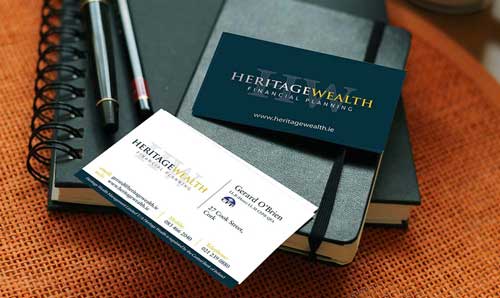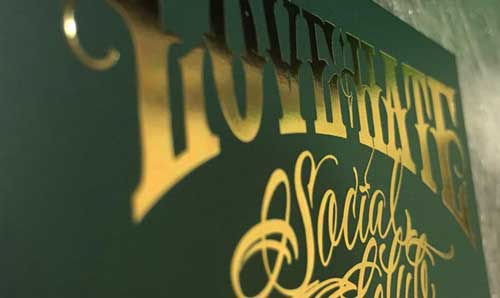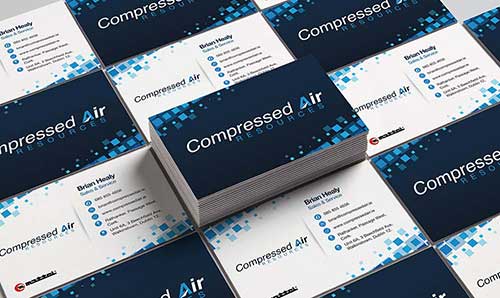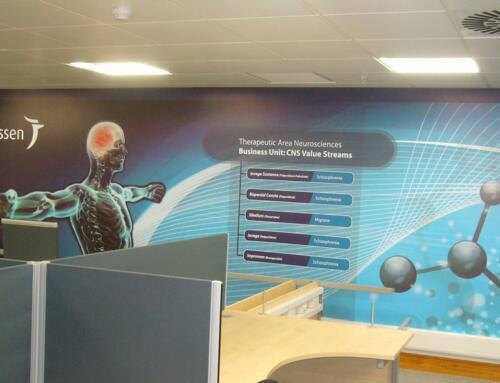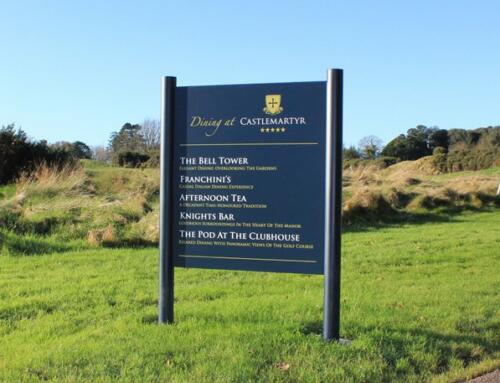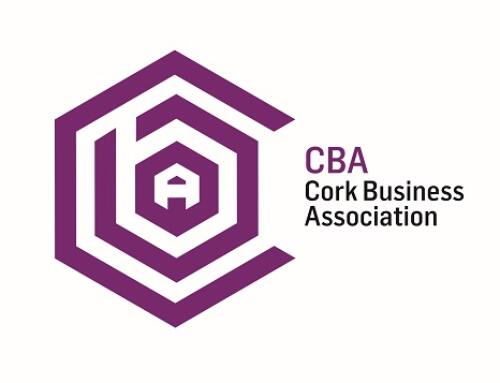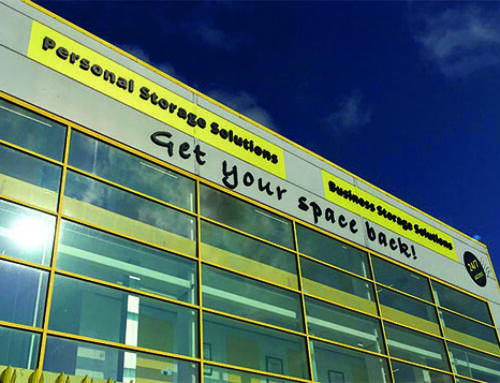Project Description
So business cards…..do you need one anymore?
The answer is “No”. That is of course if you sit in an office all day and never meet anyone, I mean “Never” meet anyone!
Here are 10 things to know regarding you and your business card.
1. It’s a brand touch point…among others…
Building your brand, builds your business. It’s so important to pick up on ways that help you achieve brand building results. Each occasion your prospects or customers interact with your brand is an opportunity to contribute to the success of your brand. The presenting of a business card is part of that process. It can be viewed as part of a critical strategic process, being executed at the tactical transaction level of doing business and optimising opportunities. The more your brand is built, the more people will do business with you. We recently attended a marketing professional’s presentation where over the previous 6 years a traditional national business has almost been doubled in turnover terms. Identifying and managing brand touch points was a critical step in the impressive results achieved. Astute business people don’t underestimate the value of the business card as a vital brand touch point.
2. It can separate you from the crowd.
A business card identifies you with clarity. Business people generally meet many people as they go about their day/week/month. If they put their hand in their pocket or purse and your business card, sometime after you have presented it, it helps them remember you and helps you stand out from the crowd. In business, that’s worth something. Increasing relationships helps foster opportunities. Remembering you through your business card gives the next meeting with you, a chance to start at a level above, what it otherwise might be.
3. It avoids embarrassment
So a group of 4 or 5 business professionals meet and are chatting. The engagement is positive, vibrant and you connect well with the people in the conversation. So one person reaches into their purse or wallet or pocket and produces a business card for each person there. The others react by returning the courtesy. You’re patting your pockets and apologising, “sorry I don’t carry a business card”. Is there just a slight edge that the others gain, in that circumstance? So do you accept their business cards? Might a thought cross their mind that it might be a waste of time giving you their business card, considering you don’t value one of your own? Avoid the issue, carry a business card, at least one! Preferably more.
4. It’s professional practice.
Showing your level of professionalism can only help your business and personal reputation. Do you have business, engineering, I.T., law, or other qualifications which you studied for over the years. Was it to achieve a certain level of professionalism in your chosen career area? Passing a business card maintains and presents you as a person operating to a standard. These days standards of professional standing all help build trust and achieve business goals and objectives.
Vincent Scanlon ACMA CGMA MMII
It’s good to have a way of presenting your credentials. I find the business card an elective way of presenting mine. Help the person you are engaging with to gain an understanding of where you are coming from, with a professional record of who you are. Even if you don’t have letters after your name, it is still viewed as a professional way of operating to present your card, with the correct spelling of your name available and your contact details. If being a professional or acting in a professional manner is of benefit to you, build good habits and practices that support you in this regard and the passing of a business card is a simple but elective one. Making it habitual, makes it easy to do and have a cumulative impact.
5. It’s a name reminder.
We all get a blank, in one way or another, from time to time. How many of us, when introduced to someone, particularly when introduced to a few people at a time, get a blank over a name? We’re so focused on getting
on with the topic of conversation, we let the name slip. It happens. I have been observing people’s use of my business card after presenting it. Many people pay little heed to it, when it’s initially passed to them. But having been talking for a while, either standing in company or in a meeting situation, I have regularly, seen people retrace where they put the card and have another look. I like them having easy access to my card as an easy reminder of my name.
6. It helps brand recall value.
So a person glances at your card when you hand it over. Hit 1 for your brand. You’re chatting for a while and they pick it up and glance at it again – Hit 2. You’re in a meeting and the conversation revolves around something to do with a point your making, a strength maybe of your business that you want to emphasise. You pick up the card and refer the person to it. It could be a point around your strapline, or the location of your business so a reference to the address, or maybe letting them know your mobile number is on the card, or maybe there’s a quotation of some sort on the card that you find useful to refer to. A reference like this where you have some levels of your communication hierarchy being displayed on the card, can allow you bring it into a conversation and this is another Hit, (Hit 3) in terms of your brand being seen.
Hit 4 – In a meeting situation having a business card on the table with the brand faced up and visible, is another useful way of having the brand awareness facilitated.
So a person leaves your company and later on, in their own time retrieve the card as they empty their pocket or purse. Another hit for the brand! Hit 5. Even if they subsequently throw the card out, that’s a good number of brand hits for a minuscule cost. The more a person is exposed to your brand, the more chance there is that they will “Recall” it, on another occasion.
7. It can be a utility in your objective.
This was touched upon in point 6 above. We have a folding business card which gives us 4 leaves / sides to work with. We have our brands clearly displayed on the front plus a visual graphic which is like a brand asset. This helps alignment with the graphic used across other print items, our vehicles and our website. Those elements are the top of our communication hierarchy. We have our names and contact details on the next inside page. The 3rd and facing page has a list of what we do and another brand asset phrase we use…”Let us present your company properly”. Then on the outside back, we have a slightly more developed strap-line we use, referring to our skills and experience being able to help clients grow their organisation.
That’s a lot of useful information for us to use in many different situations. For example, if it’s one of our designers or an account manager in conversation with a prospective client of ours, the business card is there as a utility to emphasise any points requiring reinforcement, (and of course, as referred to above, to be referred to in order to enhance brand touch points, brand awareness and brand recall value).
8. Don’t use one if….it represents you poorly
A poor business card can do harm and close doors. A thin cheap stock paper, a poor brand design, and or poor layout, all present barriers to someone believing in you and what your business is about. Don’t be tempted to cut corners, it’s false economy. Your time is valuable. The time working out what it is you want on a business card is worth valuing and getting a good return for.
Your time engaging with people, whether it’s selling something or just supporting and reinforcing some other type relationship, is also valuable. Reach, to get the maximum return from your time spent engaging with people. Present a quality message on a quality business card and put your best foot forward….always. (See the funny stories below, closely related to this)
9. Presenting a business card reflects a readiness to engage and do business.
It’s such a positive step, like a mile marker in a marathon. It shows intent and willingness to engage. It means you’re taking the engagement seriously and would be happy for future contact, whatever type that may be. It can put the other person in a positive frame of mind towards you. That can only be positive for both parties.
10. It’s fantastic value for money.
A good business card, well thought out in advance should have a layout and content that doesn’t require changing for a reasonable period ahead. Avoiding rushed decisions on business card layout, helps to avoid changes required after a relatively short period of time. This allows you to buy a quantity of business cards that best suits your need and helps achieve a fair economic price. For the value you get for the business card, in terms of its power to help your objectives, it’s hard to get a lower cost per unit, for such a valuable tool, used over time.
And a further tip on buying business cards… A funny story ….actually 2 funny stories!
The Lean Guy.
I attended a Chamber of Commerce business presentation some years ago. I happened to be seated next to a guy who had received a good redundancy package from a previous employer. He had set himself up as a Lean practitioner and was offering his services to companies to help them strip out cost and make their business lean so that they could optimise returns from future growth.
While chatting during the coffee break he produced his business card and I accepted it. I reached for mine and he accepted it. He complimented my card, which I appreciated. I looked at his, to return the compliment. He didn’t miss my pause. Yikes!! “Is it that bad?” He asked. It was. But I didn’t want to say that. “Have we met before?” I asked him. “Your card just seems very familiar to me.” I added. “No” he replied, “I don’t think we’ve met before.”
I studied the card and wracked my brain. It was the colouring and the logo, I realised seemed so familiar to me. I left him for a minute and returned over to my seat to the business satchel, I had with me. I rooted through the front pocket, where I often place business cards until they make it to my desk. Eureka! Success! I found it!…… I know, I know …its just a business card story, but I was more than a little intrigued!
I returned to him with the business card I found. I asked him whether this person was a part of his company. “No”, he replied, after studying the card. It was an identical business card in terms of layout and colouring. I mean even the brand icon. Exactly the same. Just the name and contact details were different! So what was going on here?
He had typed his name into a template type printing site and produced a small business card, in a very light, weak paper, with a template design, which another lady was going around town with, on her business card as well. A completely different business but presenting exactly the same brand icon and overall colouring. I know, I know …it’s just a business card story….but…..
No clarity of differentiation or message and it just represented the guy as having invested the absolute minimum of resources into his presentation process and an attention to standards that just didn’t give me any confidence. Yes, I know he’s into lean! He definitely saved money, but I wouldn’t want to save money so much as to have my business objectives undermined. His modus operandi just came across as less than credible and the confusion involved, distracted from the conversation. We laughed about it and ….coffee break ended….
The American Trip Guy
So, I attended a funeral some time back. I couldn’t make the removal the night before, but I liked the guy and knew him fairly well and felt I’d like to sympathise with him at the passing of his Mum, so I attended the mass the next morning. I didn’t get the chance to sympathise until after the ceremony and as we chatted, a couple of other guys joined us and the lad who lost his Mum insisted we pop over to have a drink and some food with him in the pub across the road, where everybody was gathering. Some time later we were standing around, chatting. Each of the guys was saying a little of what we each do “to earn our crust”. A good friend and customer of mine laughed about what I do in terms of presenting businesses well. Just for fun, he challenged one of the lads to hand over his business card to me, for my opinion on it. The guy put his hand in his pocket and proudly and confidently handed over his card. Full marks to him for having one to hand.
I looked at it. I had to take a second look. I held my own council for a while, unsure how to proceed. Initially, I was wondering was it a wind-up. All eyes on me and they’re chiding me to share my diagnosis. I thanked him for the card and put it in my pocket. There was uproar. No, no, you’re not getting away that lightly. Even the guy who owned the card was pushing me at this stage. I asked him was he sure, he wanted my opinion. He said he was. “Out with it”. I asked him where he had been using the card and for what purpose. He said he was just back from a tour of TV stations in some part of America where he was presenting his companies abilities as a service provider to them. I asked him had he engagement and healthy follow-up conversations going on since his return. He said he was back a few weeks and although there was initially some promise, he couldn’t say he had any concrete business from the trip, yet anyway.
Do you know you have a spelling mistake on the card? “Yeah right!” He says. “Like you haven’t used that one before!” He realised I wasn’t kidding. The strapline immediately under the brand company name had a word spelt wrong. If memory serves me right, I think it was the word “digital” spelt “digtal”. Really plain to see. I handed him back his card and he checked it. He couldn’t believe it. The guys all reached for the card and it was shared around. The slagging was unbearable! It was a light moment in an otherwise difficult day…
I know, I know, it’s just a business card story. Maybe nobody told him about the spelling mistake because maybe nobody noticed it. Or maybe they did notice it and decided not to engage. One thing is true. If people did notice it, it might be fair to say that it probably wouldn’t be viewed in the most positive light, in terms of professionalism. Especially at the high level of the business sector he was operating in. Nobody else produced their business cards. We changed the subject!!
Written by Vincent Scanlon

